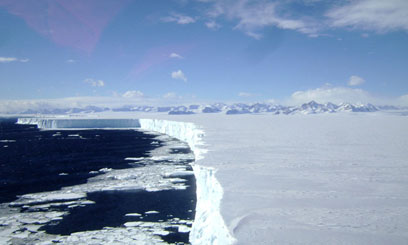
“If this trend continues we will not have sea ice by the end of this decade,” said Maslowski/AFP-File
Columbia University and the environmental activist group Greenpeace held separate events to discuss US government data showing that the Arctic sea ice has shrunk to its smallest surface area since record-keeping began in 1979.
Satellite images show the Arctic ice cap melted to 1.32 million square miles (3.4 million square kilometres) as of September 16, the predicted lowest point for the year, according to data from the National Snow and Ice Data Center in Boulder, Colorado.
“Between 1979 and 2012, we have a decline of 13 percent per decade in the sea ice, accelerating from six percent between 1979 and 2000,” said oceanographer Wieslaw Maslowski with the US Naval Postgraduate School, speaking at the Greenpeace event.
“If this trend continues we will not have sea ice by the end of this decade,” said Maslowski.
While these figures are worse than the early estimates they come as no surprise to scientists, said NASA climate expert James Hansen, who also spoke at the Greenpeace event.
“We are in a planetary emergency,” said Hansen, decrying “the gap between what is understood by scientific community and what is known by the public.”
Scientists say the earth’s climate has been warming because carbon dioxide and other human-produced gases hinder the planet’s reflection of the sun’s heat back into space, creating a greenhouse effect.
Environmentalists warn that a string of recent extreme weather events around the globe, including deadly typhoons, devastating floods and severe droughts, show urgent action on emission cuts is needed.
The extreme weather include the drought and heat waves that struck the United States in the summer.
One consequence of the melt is the slow but continuous rise in the ocean level that threatens coastal areas.
Another result is the likely release of large amounts of methane – a greenhouse gas – trapped in the permafrost under Greenland’s ice cap, the remains of the region’s organic plant and animal life that were trapped in sediment and later covered by ice sheets in the last Ice Age.
Methane is 25 times more efficient at trapping solar heat than carbon dioxide, and the released gases could in turn add to global warming, which in turn would free up more locked-up carbon.
“The implications are enormous and also mysterious,” said environmentalist Bill McKibben, co-founder of 350.org, a global non-governmental organization focused on solving the climate crisis.









































